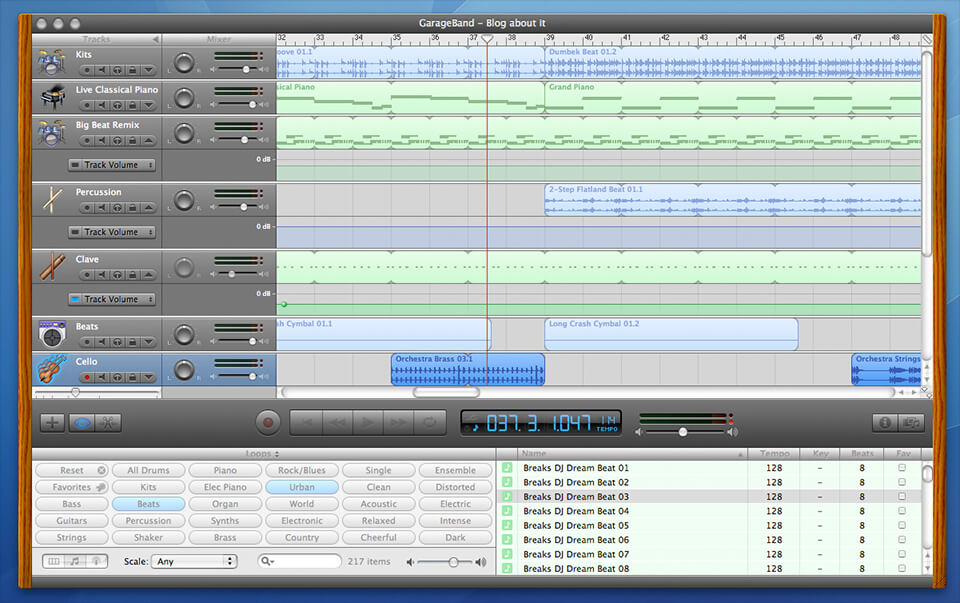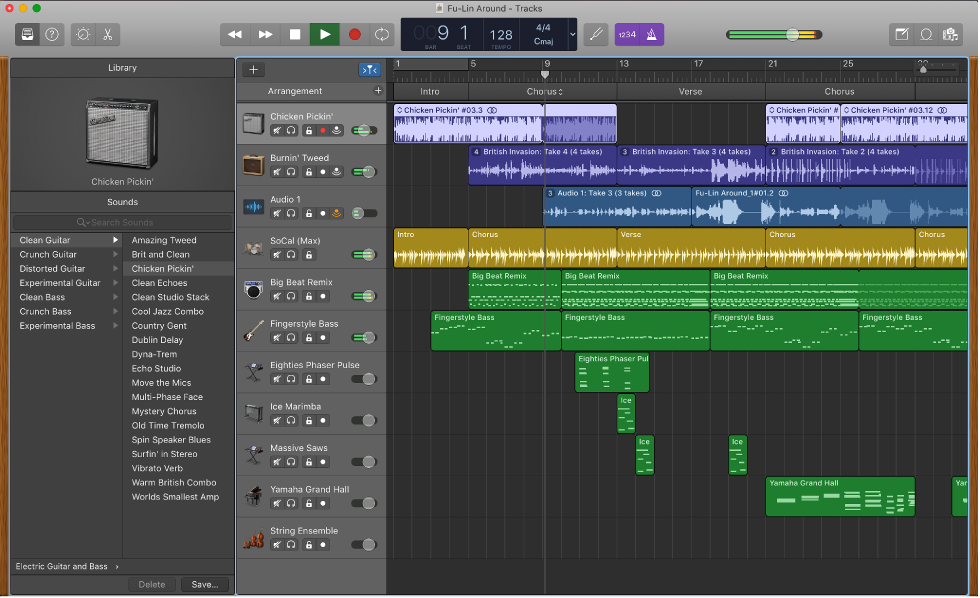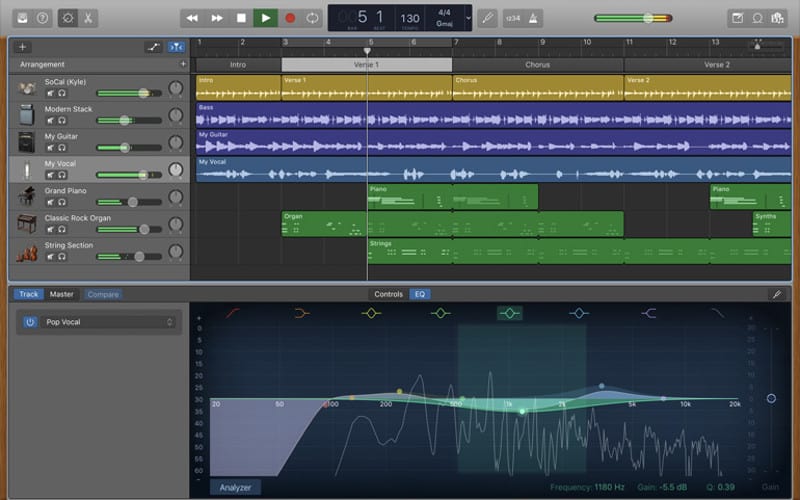In this tutorial, we learn how to make a beat in Apple Garage Band. First, load Garage Band and then load a beat onto this. After this, you can find a melody by using the different bars on the left, to change the sounds and create different effects with the music. Use the bars on the side if you want to make your own beat, you can use anything from classical to hip hop beats. You can also add. To use Garageband’s arpeggiator, follow this step-by-step process: 1) Create your MIDI melody using your instrument of choice, ie, Steinway Grand Piano. 2) Copy the MIDI notes using the (Command + C) function 3) Choose your favorite arpeggiator sound. That’s your cue to click and drag — and as you drag, most loops expand to fill the space you’re making, repeating the beats in perfect time. By resizing a loop, you can literally drag the loop’s edge as long as you like. Repeat the loop. Depending on the loop that you chose.
- Raptips.com has put together a video complication about a music making software called GarageBand. GarageBand is only available on Mac computers. It is a very easy to use and a fun program. This teaches you how to make your own songs and beats. Part 1 of 2 - How to Make your own beats using GarageBand.
- Create a New Track button: Click this button to add a new track to your song. Track Info button: If you need to display the instrument used in a track, click the track to select it and then click this button. You can also control settings, such as Echo and Reverb, from the Edit pane of the Track Info display.
GarageBand for Mac 10.2 includes a variety of Apple Loops powered by Drummer. Quickly add beats to your project by dragging a Drummer loop from the Loop Browser into your project. Choose from variety of Drummer Loops for each virtual drummer character profile.
Find a Drummer loop
To open the Loop Browser, click in the upper-right corner of the GarageBand window.
Drummer Loops appear in the Loop Browser with a yellow icon . To show only Drummer Loops in the Loops Browser, select Drummer from the Loop Packs pop-up menu at the top of the Loops Browser. Preview a loop by clicking it in the Loop Browser.
Add a Drummer loop to your project
When you’ve found a Drummer Loop you like, drag it into an empty part of the Tracks area. GarageBand automatically creates a new Drummer track with a region of the Drummer Loop. All the settings in the Drummer Editor are configured to reproduce the sound of the Drummer loop.
You can now edit the track as you would any other Drummer track using the Drummer Editor. You can also create your own regions in the track, and edit them freely.

Add additional Drummer Loops


You can add additional Drummer Loops of the same type (Acoustic, Electronic, or Percussionist) to an existing Drummer track. Adding Drummer Loops from multiple Drummers to the same track may cause the loop to sound different from the preview.
If you want to add a Drummer Loop of a different type, dragging it to the tracks area creates a new Drummer track. A GarageBand project can have up to six Drummer tracks.
Producers that use our loops and samples are always asking ”How do I import Apple Loops in Garageband or Logic?”, so we put together this simple tutorial to show you how it’s done.
How To Make A Beat Drop In Garageband Macro
Importing and indexing our Apple loops into Garageband is really, very easy. In a nutshell you simply drag and drop the apple loops from a ‘Finder’ window directly into your loop browser while Garageband or Logic is open.
Here’s a Step by Step Guide.
1 – Open a Finder window and navigate to the folder on your hard drive that contains the apple loops. Make sure that you have unzipped the apple loops from the zip file first.
For older versions of Garageband, you need to make sure that you are viewing the actual .aiff files and not just the folders.
You cannot drag folders into the older Garageband loop browser, only files.
2 – Open Garageband, expand the loop browser if required. To open the loop browser, click the Loop Browser button (with the eye icon) in the control bar. Next go to the Finder window and select the apple loops (.aiff files) that you want to index and simply drag and drop them directly into the open loop browser.
3 – Depending on the amount of loops that you are importing, it could take some time, so go and make some coffee while you wait. The fast your machine ,the faster the loops will get indexed. If you’re good at keeping your disk defragmented you’ll also see a benefit in speed during massive file dumps.
4 – When the apple loops have finished indexing go to the Preferences > General tab and uncheck the “Filter for more relevant results” option as this will increase the number of apple loops that you’ll be able to see. You might want to try doing this before indexing the loops.
Top Tip 1
If you have purchased our Max Producer Pack or simply have lots of collections of apple loops it’s going to take a long time to navigate to all the sub folders that contain your files. The best thing to do in this instance is to dump all of your apple loops into one large folder and then use Finder to search only for .aiff files within that folder.
You can then select the search results and drag and drop them into the Garageband loop browser. It will take a long time to index the files but you’ll have saved a lot of time manually digging down to sub folders to find your apple loops.

Top Tip 2
GarageBand 1 installs its loop content in:
/Library/Application Support/GarageBand/Apple Loops/
GarageBand 2 and later and Logic Pro/Express 7.1 install their loops in:
/Library/Audio/Apple Loops/Apple/
Or
Garageband Beat Maker Download
~/Library/Audio/Apple Loops/User Loops
Just be careful what you delete. Make sure you only delete files that failed to index and always have a backup of anything you intend to delete.
How To Make A Beat Drop In Garageband Machine
Top Tip 3
Garageband will not display loops in the loop browser if they are tagged with a different time signature to your Project. So, if your song is in 4/4 time don’t expect to see any 5/4 time loops in the loop browser. Only matching time signatures will display.
